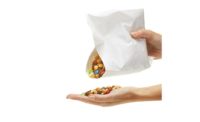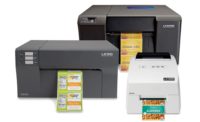Advances in snack and bakery packaging safety
Research and product development are moving at a rapid pace

Manufacturers and researchers worldwide are striving to develop new ways to keep snack and bakery products safe and fresh over the course of their intended shelf life. Active packaging technologies and modified atmosphere solutions are key areas of focus as are tamper-resistance, sustainability and traceability.
An atmosphere of change
Along with processes to extend shelf-life, demand is growing for shelf-stable packaging, according to the 2019 Global Packaging Trends report from the Association for Packaging and Processing Technologies (PMMI), Reston, VA. Aseptic shelf-stable packaging is growing in popularity, particularly in developing markets where shelf-stable products are in higher demand. Modified atmosphere packaging (MAP) also is commonly used to preserve food products while keeping them as natural as possible.
“As consumers seek greater transparency from brands in terms of ingredients, and demand products that are less heavily processed, new packaging technologies have emerged, and are consolidating to reinforce the health attributes of brands. This is the case with MAP,” says Sean Riley, senior director, media and industry communications, PMMI.
Research and development of packaging materials to improve food safety continues worldwide, according to Andrew Manly, communications director, The Active & Intelligent Packaging Industry Association (AIPIA), Utrecht, the Netherlands. He says the EU-funded NanoPack project, which aims to develop a microbial-inhibiting film for full commercial development, came to a conclusion at the end of 2019.
“The flexible packaging material created showed some remarkable results in inhibiting microbial and fungal growth of bread and baked products. But the work continues and it was already proven that it could be produced in commercial quantities. So we are hopeful that we will see this enter the market at some stage,” Manly says.
Current focus has been on sustainability issues, so developments in active materials without some kind of environmental credentials are not a priority, Manly adds. “While we have seen several interesting products in the condition monitoring (food safety) field, the demand by brand owners for compostable, biopolymers or mono materials has slowed research into the more complex polymers or encapsulated materials that generate more active properties.”
AIMPLAS, a research center located in Valencia, Spain, has launched the SafetySenseO2 project to develop a printed sensor that can detect the presence of oxygen inside packaging. The goal is to make it possible to detect in-line defects in MAP in a non-destructive and economical way, as well as during transportation and storage. AIMPLAS is a member of AIPIA.
Given oxygen’s key role in food spoilage, many foods are packaged under MAP to extend their shelf life. The major problem with MAP is the lack of a simple, inexpensive oxygen indicator to guarantee the integrity of the food. Currently, there are commercial solutions in the form of tablets or labels to measure oxygen levels in packaging, but they are expensive and difficult to manage, the researchers note. “This oxygen sensor can have other applications in the packaging sector. For example, it could be used to monitor the operation of oxygen scavengers in active packaging,” says Lola Gómez, a researcher at the center.
In another development that could improve packaging safety, researchers at England’s University of Oxford have developed a new type of nanosheet coating for food packaging that could replace metalized films currently in use. The new film is made by using an inexpensive process that produces thin films made from water and amino acids. The film is transparent, and most importantly, does not allow gases or water vapor to pass through.
The researchers have tested the film by exposing it to several gases currently in use in food packing and found it to be about 50 percent less permeable. They also have put it through physical abuse tests to make sure it could stand up to the processes that packaged foods must endure. They report that it has withstood such abuse as well as metalized films. However, they acknowledge more testing needs to be done before companies would be willing to switch over.
High-pressure processing (HPP) is continuing to develop as an attractive food safety solution, according to Riley. HHP is a nonthermal, cold processing technique in which food in its final flexible packaging is subjected to high levels of hydrostatic pressure, inactivating its microorganisms, thus extending shelf life and guaranteeing the food safety of the product.
“The process allows food to retain its appearance and nutritional benefits, aligning it perfectly with current consumer trends. HPP is recognized as a natural and environmentally friendly technology that eliminates the need for preservatives and other shelf life extending additives. It also is suited to the growing flexible packaging bakery and snack market,” Riley says.
Vendor innovations
“MAP solutions are interesting, but we’re mainly focused on advancing barrier technology that can lead to an extended shelf life for frozen and snack food products,” says Holly Dunnill, North America Food & Specialty Packaging market director for Dow Packaging and Specialty Plastics, Midland, MI. Dow provides a broad range of applications to address growing demand for packaging solutions that improve product shelf life and reduce food waste. The company offers resins that optimize package design and performance by providing a combination of moisture barrier, toughness and sealability.
Among these, Dow offers ELITE and ELITE AT HDPE Resins, which are designed for dry food packaging and stand-up pouches. They feature a moisture barrier, heat resistance, stiffness and low dusting propensity. The resins increase snack food shelf life by maintaining freshness longer and keeping moisture out of things such as snack and chip bags. The technology allows brand owners to put a longer-out expiration date.
In the area of sustainability, Dow recently partnered with Bear Naked to use Dow’s RecycleReady technology and RETAIN functional polymer modifiers to develop a fully recyclable barrier package for the brand’s granola packaging, which qualifies for the How2Recycle label and the Store Drop-off program. “The demand for clean-label foods without preservatives and additives poses freshness challenges, which requires packaging like this with strong barriers and hermetic seals,” Dunnill says.
Adding a reclosable feature to packaging is another way to optimize product freshness. These closures can minimize air exchange in a package, which helps to extend shelf-life. To that end, Presto Products Co., Appleton, WI, has developed the Fresh-Lock Multiplex zipper style 8555, which features five sets of interlocking channels that help seal in freshness with a closure that consumers can hear and feel. The zipper requires no lock alignment and works well with many bakery products, including those that have granules. In addition, Multiplex is 100 percent recyclable as a component in a polyethylene (PE) recyclable package.
Another technology for preserving product freshness is the Fresh-Loc Click ’N Lock sensory zipper. It utilizes a texture between the double zippers that can be felt as the bag closes, providing sensory feedback to ensure the package is sealed tight. The zipper makes an audible noise when the package is opened and securely sealed. “The Fresh-Lock 8000 series closures are compatible with emerging film structures, allowing entire packages to be recyclable,” says Todd Meussling, senior market development manager of Fresh-Lock Closures.
Traceability is another important aspect of packaging safety. Videojet Technologies, Chicago, works with snack food and bakery producers to integrate coding, marking and printing solutions such as lasers, continuous inkjet, case coding and thermal transfer systems, and to integrate traceability solutions into their operations. By harnessing information printed on primary and secondary packaging and through production line control systems and software, modular Videojet traceability solutions can help address threats of counterfeiting, diversion and recalls.
“Real-time data can help track the receipt of raw materials, the measurement and control of ingredients, finished product labeling, and sales order fulfillment. In the event of a recall, for instance, a retailer with a track-and-trace solution in place can reduce consumer risk by more accurately defining where a product may have been compromised within a production process,” says John Nobers, director of North America solutions sales.
The Videojet 2351 and 2361 inkjet case coding systems print real-time alphanumeric codes and bar codes containing production data and supplier-specific information. “The high-resolution printed codes meet the requirements for traceability and rapid identification of product through the warehouse and to the wholesaler and retailer,” says Nobers. “They also allow manufacturers to quickly react to changes in content or to update allergen warnings if necessary.”
Looking for a reprint of this article?
From high-res PDFs to custom plaques, order your copy today!





